
Taj Mahal
Agra, India
The Taj can be accessed through the west, south and east gates, which all lead to an outer courtyard. The south gate is the main access and is easiest to reach from Taj Ganj, while the east gate generally has the shortest queues. The west gate gets very crowded with tour groups, but they don’t normally arrive until after 9am. There are separate queues for men and women. Prohibited items such as food, tobacco, matches, mobile phones and camera tripods can be left without charge in cloakrooms. Don’t forget to visit the cloakroom first to avoid queuing twice.

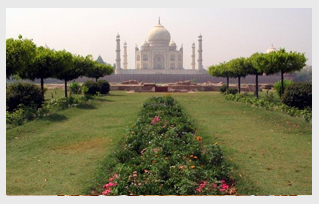
Mehtab Bagh
Agra, India
This park, originally built by Emperor Babur as the last in a series of 11 parks on the Yamuna’s east bank, long before the Taj was conceived, fell into disrepair until it was little more than a huge mound of sand. To protect the Taj from the erosive effects of the sand blown across the river, the park was reconstructed in recent years and is now one the best places from which to view the great mausoleum. The gardens in the Taj are perfectly aligned with the ones here, and the view of the Taj from the fountain directly in front of the entrance gate is a special one.

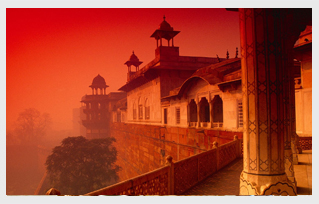
Agra Fort
Agra, India
With the Taj Mahal overshadowing it, one can easily forget that Agra has one of the finest Mughal forts in India. By visiting the fort and Taj on the same day you get a Rs50 reduction in ticket price. Construction of the massive red-sandstone fort, on the bank of the Yamuna River, was begun by Emperor Akbar in 1565. Further additions were made, particularly by his grandson Shah Jahan, using his favourite building material – white marble. The fort was built primarily as a military structure, but Shah Jahan transformed it into a palace, and later it became his gilded prison for eight years after his son Aurangzeb seized power in 1658.

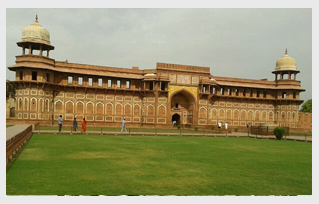
Samadhi Swamiji Maharaj Bagh
Agra, India
Known simply as Swami Bagh, this huge white marble mausoleum, which houses the tomb of Sri Shiv Dayal Singh Seth, the founder of the Radhasoami Faith, is of particular interest because it is still being built – more than 80 years after it was started. Inside there’s a 1904 painting of what it should look like when finished, complete with a gold- latticed dome. For now it’s a work-in-progress project being undertaken by devotees. The design incorporates building styles from other major religions and includes some fabulously delicate floral carvings.

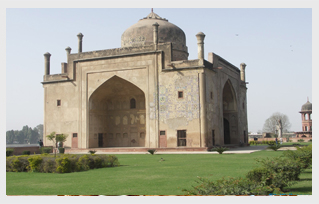
Chini-Ka-Rauza
Agra, India
This Persian-style riverside tomb of Afzal Khan, a poet who served as Shah Jahan’s chief minister, was built between 1628 and 1639. Rarely visited, it is hidden away down a shady avenue of trees on the east bank of the Yamuna. Bright blue tiles, which once covered the whole mausoleum, can still be seen on part of the exterior, while the interior is painted in floral designs.

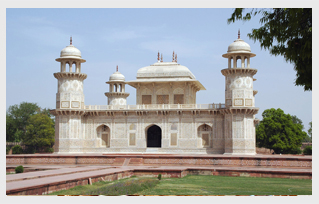
Itimad-Ud-Daulah
Agra, India
Nicknamed the Baby Taj, the exquisite tomb of Mizra Ghiyas Beg should not be missed. This Persian nobleman was Mumtaz Mahal’s grandfather and Emperor Jehangir’s wazir (chief minister). His daughter Nur Jahan, who married Jehangir, built the tomb between 1622 and 1628 in a style similar to the tomb she built for Jehangir near Lahore in Pakistan.

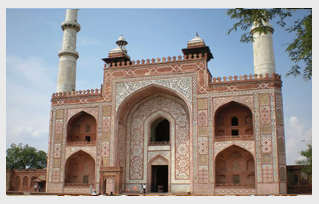
Akbar’s Mausoleum
Agra, India
This outstanding sandstone and marble tomb commemorates the greatest of the Mughal emperors. The huge courtyard is entered through a stunning gateway. It has three-storey minarets at each corner and is built of red sandstone strikingly inlaid with white-marble geometric patterns.


Museum
Agra, India
On the western side of the Taj gardens is a very small museum, housing original architectural drawings of the Taj and some nifty celadon plates, said to split into pieces or change colour if the food served on them contains poison.

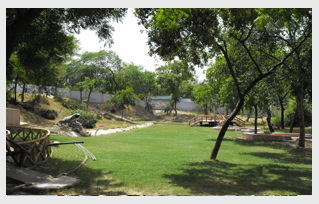
Taj Nature Park
Agra, India
Follow the stone pathways through this mini nature park for a pleasant nature ramble among birds and butterflies, with the Taj hovering in the background.

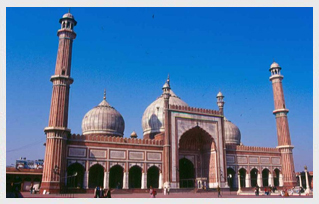
Jama Masjid
Agra, India
This fine mosque, built in the Kinari bazaar by Shah Jahan's daughter in 1648, has no minarets but features striking marble patterning on its domes.

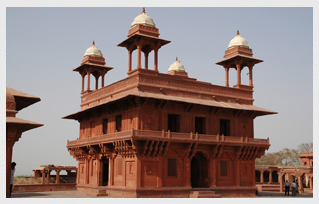
Fateh Pur Sikri
Agra, India
Most visitors to India know that Agra was once the nation's capital. Far fewer, though, realise that another of India's former capital cities lies just 40km away. Now almost completely abandoned, the magnificent Fatehpur Sikri was the short-lived capital of the Mughal Empire for 14 years of Akbar's reign. The city was an Indo-Islamic masterpiece, but erected in an area that suffered from water shortages and so was abandoned shortly after Akbar's death. It now makes a fabulously rewarding day trip from Agra, and is easily reached by bus.


Sikandra
Agra, India
Sikandra is the mausoleum of Akbar. Akbar himself started construction of this beautiful monument. This structure has a perfect blending of Hindu, Christian, Islamic, Buddhist, Jain themes. Sikandra is named after Sikandar lodi, the Delhi ruler who was in power from 1488 to 1517.
Sikandra Fort is located in the western periphery of the city at a distance of about 10 kms from the city center. Sikandra the last resting place of the Mughal emperor Akbar. Akbar was the greatest of the Mughal emperors and one of the most secular minded royalties of his time.

 +91-0120-4779150 (10AM - 6PM)
+91-0120-4779150 (10AM - 6PM)